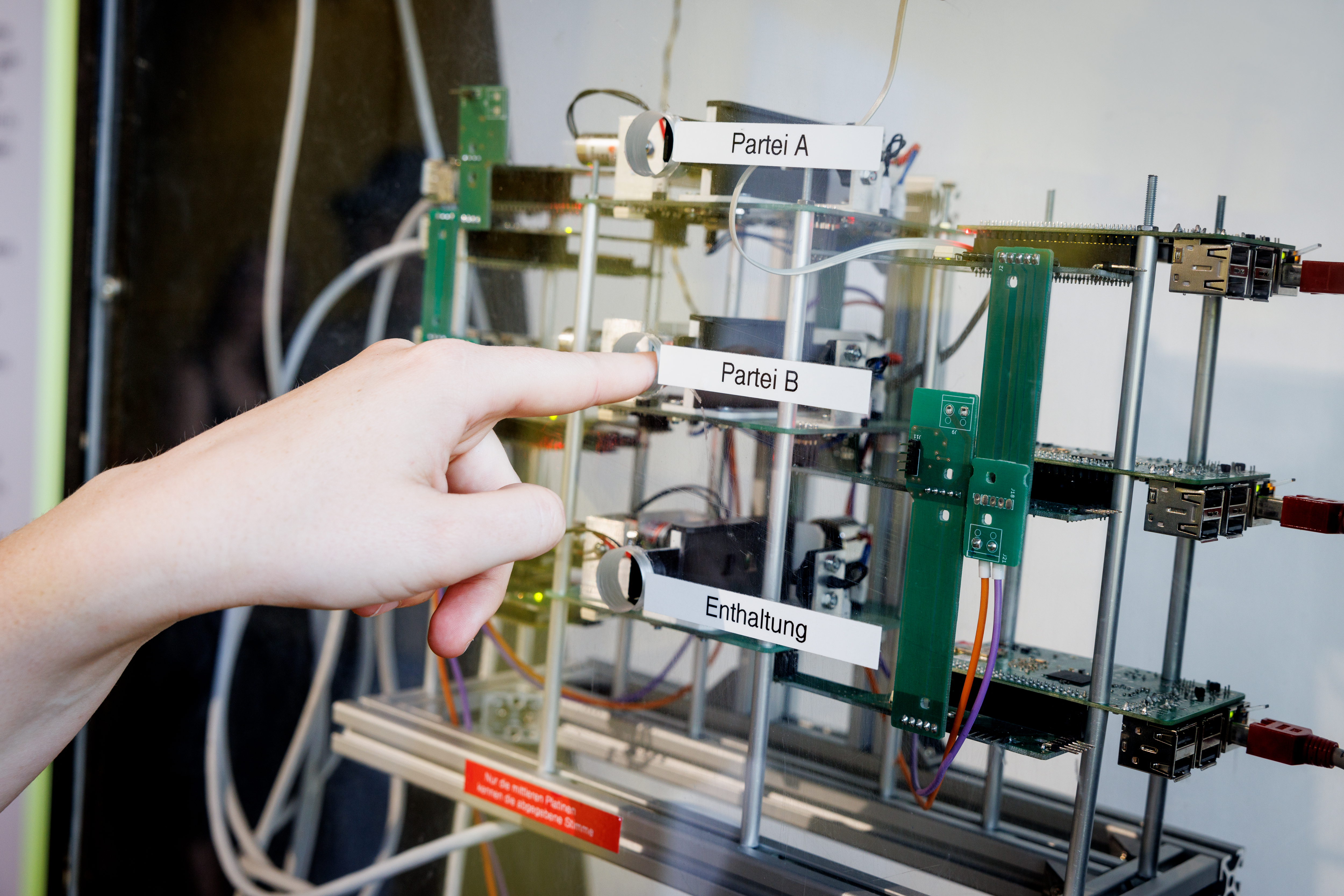Die Unwissende Wahlmaschine
2019
- Title
- Die Unwissende Wahlmaschine
- Year
- 2019
The voting booth, paper, pen, and ballot box are a safeguard against manipulation. While digital votes simplify a correct count, they also make it easier for unauthorized parties to gain access to the voting data. There is a risk of electoral fraud as a result.
Die Unwissende Wahlmaschine [The Ignorant Voting Machine] (2017–2019) is designed in such a way as to ensure that no computer or server can detect for which party the vote was cast. The accuracy of the count can be verified after the election and it can be determined whether the hardware has been manipulated. While a malicious software can delete itself undetected, changes to the hardware can be prevented.
Developing cryptographic voting machines is not about abolishing paper ballots. The aim is rather to identify challenges presented by digital voting and to develop secure solutions in response to society's demands for the introduction of digital elections (e.g. online elections).
With the push of a button, voters cast their vote either for "Party A" or "Party B" or "Abstain". The corresponding plastic panels (hardware) latches into place and regulates the amount of incoming light and thus also which of the laser beams reaches the photodiode first. The photodiode receives the information transmitted by the light and converts it into electrical energy. The voting machine then generates a random number that corresponds to the submitted vote which is then shown on the display. The random numbers of the two dummy votes are also transmitted to the photodiode. The three random numbers received are printed out on a receipt to verify that the vote has been recorded correctly. After three votes have been cast, the voting machine ends the election and prints out a result. Another election then begins.
Apart from the plastic panels (hardware), there is no component in the voting machine that learns your vote. Due to its cryptographic design, Die Unwissende Wahlmaschine cannot distinguish between the three random numbers. For unauthorized persons who do not know the random number shown on the display, the numbers are meaningless.
Credit
KASTEL – Institute of Information Security and Dependability of the Karlsruhe Institute for Technology (KIT) [Jörn Müller-Quade, Bernhard Löwe, Lukas Beeck, Anne Borcherding, Willi Geiselmann, Felix Dörre, and others]




